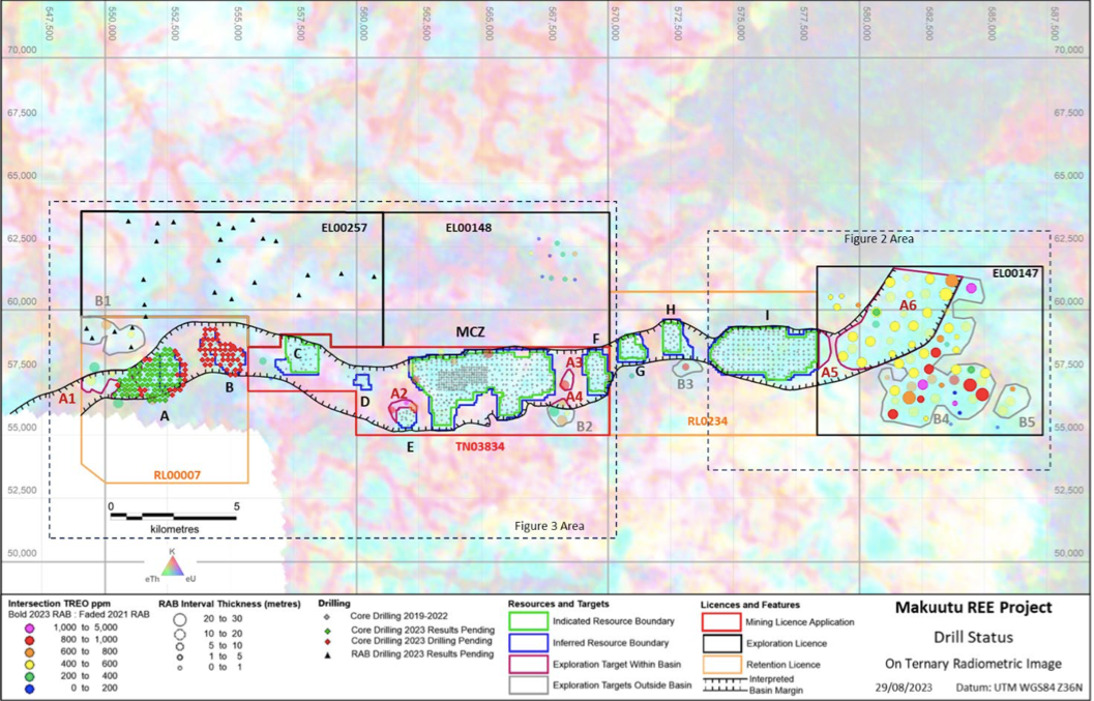532Mt and growing: Ionic Rare Earths’ resource expansion plans off to strong start at Makuutu

RAB assays have intersected high-grade results outside of the current resource. Pic: via Getty Images.
- Assays flagged high grade intervals at exploration target EL00147
- IXR says resource expansion means the projects scale could substantially increase
- DFS for Makuutu highlighted 35-year mine life for high value rare earth oxides
- Diamond drilling ongoing to upgrade resource on RL00007
Clay rare earths front-runner Ionic says the massive Makuutu project in Uganda has additional resource growth potential after new drilling intersected some of the highest grades to date.
Ionic Rare Earths’ (ASX:IXR) flagship 532Mt Makuutu project — the most advanced clay-hosted REE project on the ASX – is on track to become a long-life, low capex, scalable and sustainable supplier of high-value magnet and heavy rare earths oxides (REO).
The recent Stage 1 Definitive Feasibility Study (DFS) envisaged a 35-year life initial project producing 40,900tpa of mixed rare earth carbonate and scandium through a modular 5Mtpa heap desorption processing plant.
Capital expenditure would be a very palatable US$120.8m ($180m), with net present value and internal rate of return, both measures of a project’s profitability, estimated at $580m and 32.7% respectively.
Drilling into higher grades
The aim of the RAB drilling was to further extend the resource along the 37km long mineralised corridor on the company’s tenements.
The current Makuutu MRE is 532Mt at 640 ppm Total Rare Earth Oxide (TREO) with a cut-off grade of 200ppm TREO minus Cerium Oxide (CeO2).
MD Tim Harrison says assays from the latest drill program reported clay-hosted rare earths above the cutoff grade in 43 of 45 drill holes received including a highlight:
- 3 metres at 1,337 ppm TREO from 13 metres;
- 10 metres at 1,029 ppm TREO from 5 metres; and
- 11 metres at 1,013 ppm TREO from 6 metres.
The campaign confirms there are large areas of high-grade stuff outside the current resource, Harrison says.
““EL00147 has now confirmed clay-hosted REE in 66 of 70 RAB holes drilled across programs in 2021 and 2023, on a broad 500 metre spacing, which highlights the massive potential of this exploration target,” he said.
“These results confirm the significance of Makuutu as a strategic asset with an expanding Ionic Adsorption Clay (IAC) deposit.
“This potential to expand the Makuutu resource further to the east means we expect the scale of the project to substantially increase in the future, with these new assays inferring considerable upside at Makuutu.”
Results from a further 31 RAB holes from unexplored EL00257 are currently being analysed.

RAB and diamond drilling ongoing
Results are also pending for the remaining 31 RAB drill holes from the unexplored northwestern licence EL0257.
Diamond drilling is ongoing at RL00007, aimed at increase resource classification to indicated resource, with 78 holes completed (1,580 metres) to date.
Further work planned on these areas includes metallurgical test work to determine potential rare earth extractions and core drilling to progress to a resource estimate.
“Our focus on the delivery of the Makuutu heavy rare earths project in Uganda positions us to provide a secure, sustainable, and traceable supply of magnet rare earth oxides,” Harrison said.
“Along with our Belfast recycling facility, Makuutu is key to us harnessing our technology to accelerate our mining, refining, and recycling of magnets and heavy rare earths which are critical for the energy transition, advanced manufacturing, and defence,” he added.
This article was developed in collaboration with Ionic Rare Earths, a Stockhead advertiser at the time of publishing.
This article does not constitute financial product advice. You should consider obtaining independent advice before making any financial decisions.
Related Topics

UNLOCK INSIGHTS
Discover the untold stories of emerging ASX stocks.
Daily news and expert analysis, it's free to subscribe.
By proceeding, you confirm you understand that we handle personal information in accordance with our Privacy Policy.








